
Gibson app review: What is it?
I’ve enjoyed keeping tabs on Gibson’s Learn To Play Guitar tuition app for a few years and I’ve found it’s come on leaps and bounds, both in scope and content. It's established itself as a magnificent tool for beginners and intermediate players alike, with plenty to keep advanced players entertained too. Gibson’s app does face strong competition from Guitar Tricks, Yousician, Simply Guitar and Fender Play, but I believe it offers something slightly different.
At its core, like its competitors, it offers a learning pathway and a song library, but that’s where the close similarities end. Its tasteful aesthetic and quality video content rival Fender Play in sophistication, while its gamified animated fretboard is fun but nowhere near as brash as the garishly coloured offerings from Yousician and Simply Guitar. Naturally, Gibson’s app, like Fender’s, must reflect the company’s brand values.
I find it more refined than some other online guitar lessons but does that make it more suitable for novices wishing to learn the guitar, and intermediate to advanced players hoping to improve their playing? Let’s find out.
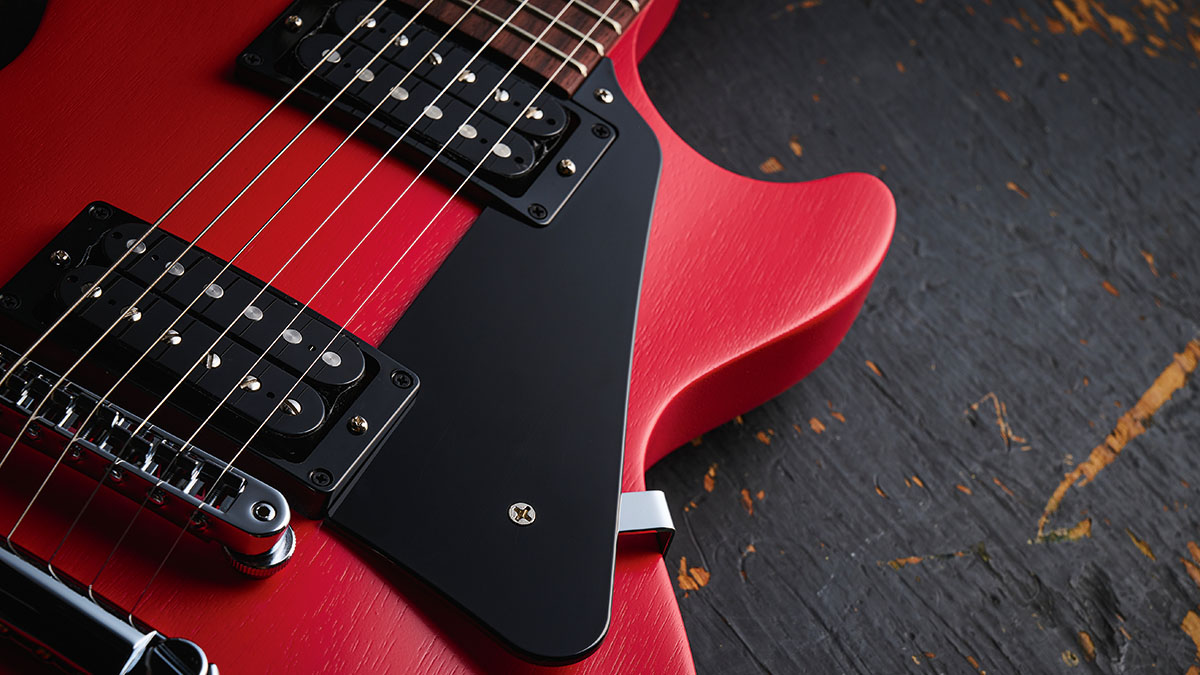
Cost: Monthly sub from $19.99/£16.99; yearly sub from $119.99/£99.99
Download for iOS
Download for Android
The Gibson app is available on iOS and Android platforms, and although it will work on mobiles, you’re going to benefit from a great deal more screen real estate if you use a tablet. For this review I used a 3rd Gen Apple iPad Air with a A12 Bionic chip, so not the fastest tablet out there but probably representative of what many of us will own and use. The Gibson app installed like a dream and ran flawlessly during my weeks of testing.
Like much of the competition, at the core of the Gibson app is a learning pathway and a song library. Additionally, it features a tuner, a metronome, a ‘Guide to…’ section, Gibson TV documentaries and, intriguingly, an augmented reality Amp & Jam area. More on which later.
First steps
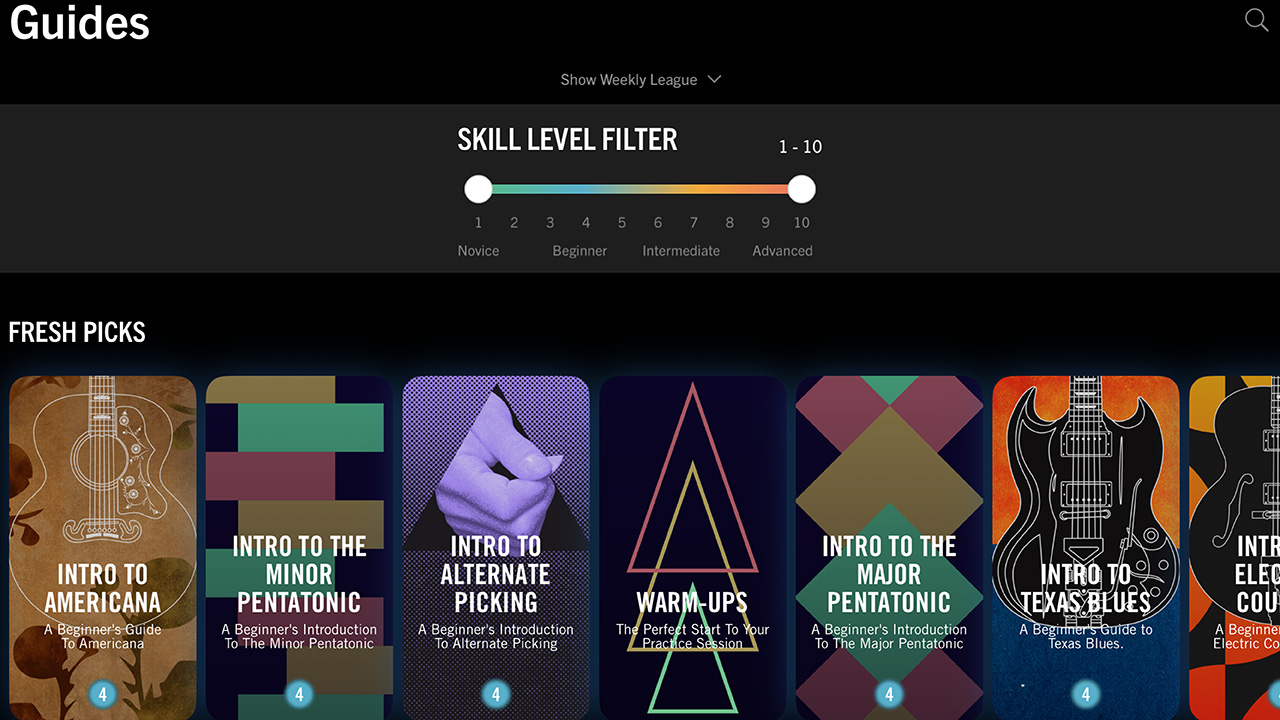
Gibson recommends wearing wired headphones because this will separate your guitar’s sound from the backing tracks, making it much easier for the app to pick out and interpret the notes you're playing. I’ve used it with and without headphones, but always in a very quiet room. With or without cans, the app has worked fine for me, but there’s no doubt it'll deliver a superior user experience if you wear them. Bear in mind that wired headphones are mandatory if you want to use the app’s nifty digital amp feature.
Getting stuck in is simply a matter of installing the app, registering an account, and taking advantage of the seven-day free trial. On signing up, you’ll be asked a series of easy-to-answer questions about your current skill level, genre preferences, age, your playing goals, and so on, so Gibson can best tailor the app’s learning path to your needs.
A brief video from Gibson’s president and CEO Cesar Gueikian follows, where he promises the app will "remove the pain points and turn every step of your learning into something truly fun and rewarding." Gueikian seems genuine enough, and I believe that his promise holds largely true. Once that’s over, you’re in.
Guitar tone and augmented reality
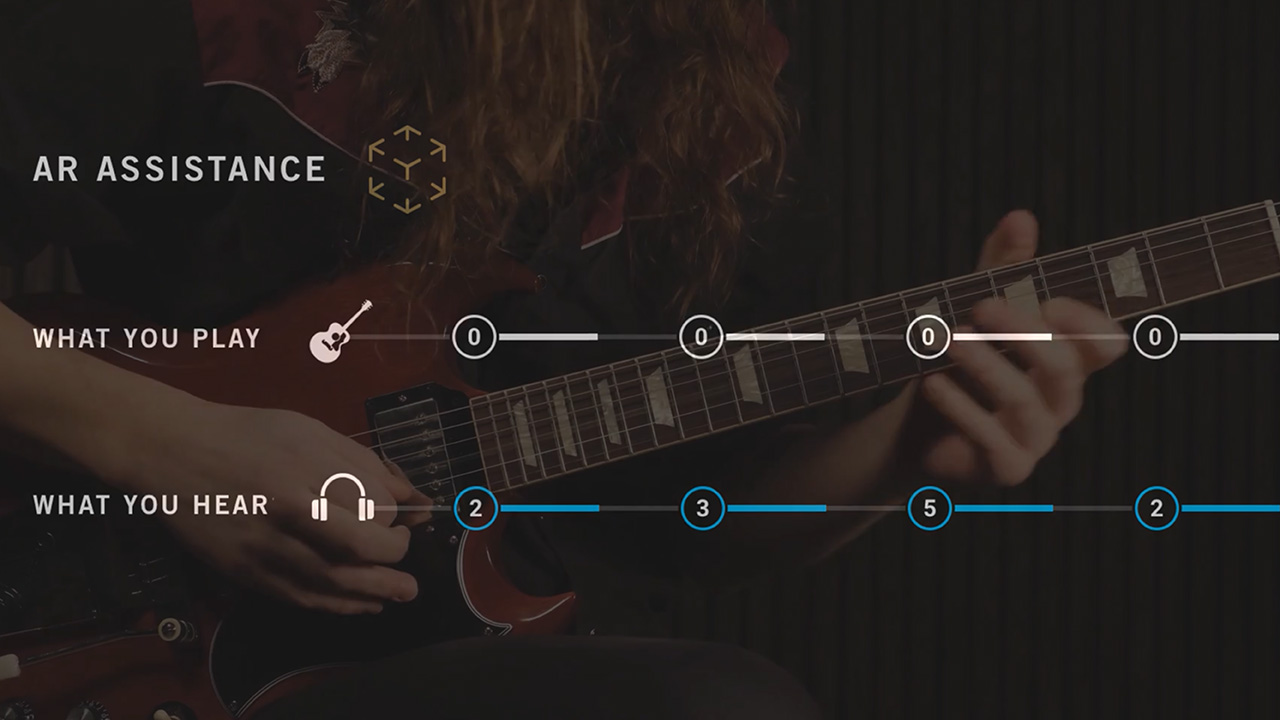
Two highly clever features play a prominent role within the app. Play a note on your guitar, and you’ll hear a genuinely impressive app-generated guitar tone coming back at you, which is why wearing headphones makes perfect sense.
Ramping this up a notch is the integrated digital amp, which authentically simulates the functions of a guitar amplifier, complete with a comprehensive pedalboard of effects. Initially, I thought this was a gimmick, but I warmed to it when it dawned on me that a lesson on The Cure’s Friday I’m In Love would sound immeasurably better if I dialled in Robert Smith’s guitar tone. Similarly, if I’m studying B.B. King, I’ll want a smooth, yet slightly driven ES-335 tone.
In a nutshell, the Gibson app enables me to input an uninspiring clean tone, yet sound just like Robert or B.B. Well, at least my guitar’s tone sounds authentic, even if my chops still have some way to go.
An interesting by-product of these generated tones is Gibson’s Augmented Reality (AR) feature, which it uses to great effect in the novice-level lessons. Gibson believes that when teaching picking hand skills to complete beginners, it doesn’t matter too much what the fretting hand is doing, provided the timing is correct. So, if a note is sounded on time, using the correct string but the wrong fret, the app will play back the correct note.
This may sound a little counterintuitive to learning, but Gibson argues that pulling beginners up for every mistake they make is demoralising. I guess this feature, which is only introduced for novice material, sticks a well-placed Band-Aid over some of the ‘pain points’ Gueikian referred to in the app’s opening video.
The learning path
Gibson guides newcomers along its learning path, which I believe is a suitable and logical starting point. Your position on the path will depend on the skill level you specified earlier, with new players beginning at the very start, intermediate players joining partway through, and so forth.
The learning path begins with a leisurely stroll through some basic skills before picking up the pace a little as it forks into two distinct routes: one for rhythm guitar, the other for lead guitar. If you’re not sure which direction to take, don’t fret, after mastering one you can return to work through the other.
As its name suggests, the basic skills section supports the novice player with a foundation of essential techniques – holding a guitar, holding a pick, fretting a note, fretting multiple notes with multiple fingers and so on – before guiding them through the lead and rhythm courses. All of the lessons rely on an animated fretboard as the primary learning tool, just like Youscian and Simply Guitar.
However, one of the features that sets the Gibson app apart from those two competitors is the video tuition that skilfully fits between the animated fretboard lessons and exercises. It’s beautifully filmed, instructive, comprehensive yet concise, and compelling to watch.
Whenever necessary, multi-camera angles let you focus right in on the fretboard or picking hand for clear instruction. Nothing is overlooked, from how to hold a pick, to adopting a healthy posture that shouldn’t cause neck and back issues in years to come.
Gibson had the foresight to recruit world-class teachers for these segments, well-known names such as Jamie Humphries. Their authority, confidence in front of the camera, and ease in communicating knowledge give the app an edge.
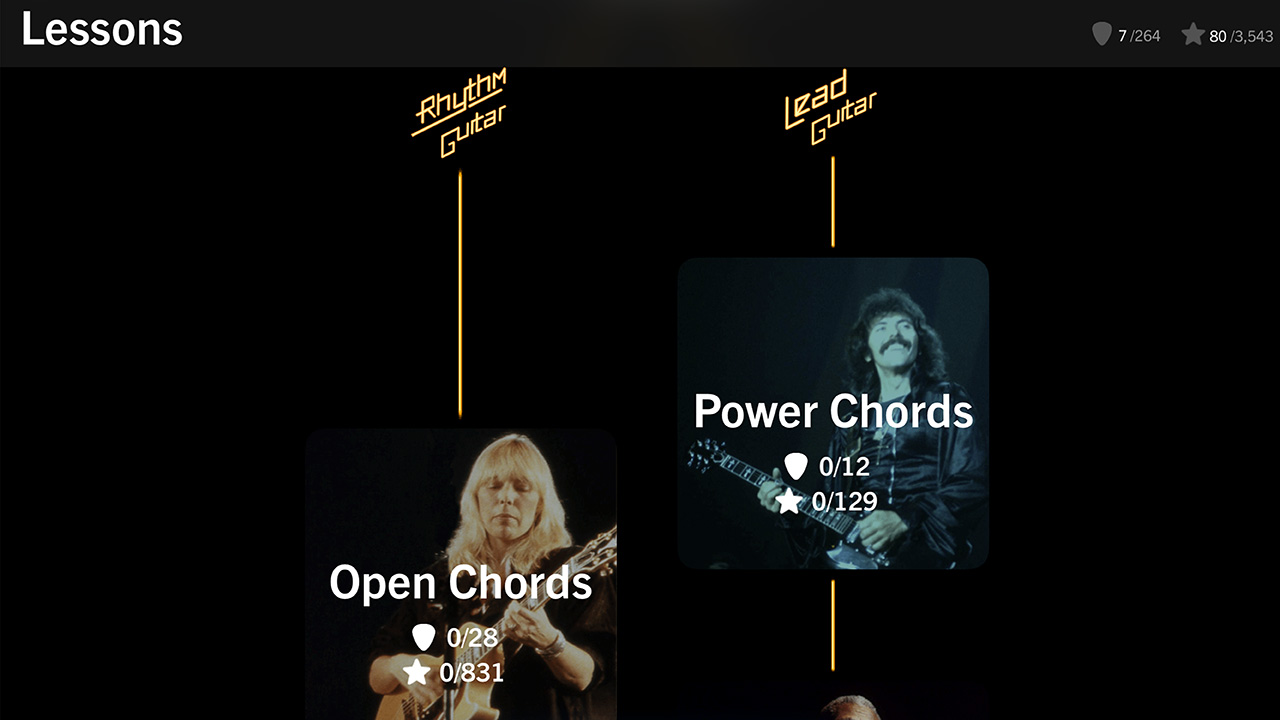
Another plus is the understated elegance of its animated fretboard. You won’t find many quirky animations or primary colours here as it’s all very tasteful and relaxed.
What you will find are controls for slowing the speed of the exercise, looping sections and restarting it from the beginning. There’s also a Stop ’n’ Go function that pauses the progress of the fretboard should you make a mistake, allowing you to recompose yourself in order to give it your best. Regrettably, this is an iOS-only feature.
The initial novice content, together with the separate rhythm and lead pathways, steadily works through a series of ‘courses’ that progressively establish a solid bedrock of playing skills. The lead path, for example, begins with a relatively simple power chord course before advancing to licks, riffs, soloing techniques, and more.
Every course is further divided into levels, each consisting of up to about six lessons. These lessons, which primarily use the animated fretboard, are enhanced with multiple instructional videos and numerous playing tips. For each level, you choose a song around which the lessons are centred, but there’s always the option to re-run the experience with a different track from another genre. Bonus practice materials are also provided.
By default, the app won’t allow you to progress to the next level until it determines you have performed sufficiently well to advance. This ‘gamified’ approach, a method shared by all of Gibson’s competitors, is a proven way to encourage engagement among most players. After all, we all enjoy being rewarded for our efforts. However, if you find this too restrictive, you can unlock all levels in the settings menu. Advanced players have access to the entire app from the get-go.
The lead pathway guides the novice soloist from plucking their first E string to confidently mastering the minor pentatonic scale across the entire fretboard. This depth is excellent for relative newcomers, but it’s the ceiling for lead content. If you are an intermediate player or above, you'll likely find you already possess these core skills.
The rhythm pathway is even more limited. Despite the excellent quality of the instruction, it's strictly for beginners, covering only triads and basic barre chords. It teaches fundamental strumming and picking patterns well, but even moderately experienced rhythm guitarists will find little here to challenge them.
In short, there’s a lot of content here, but it's biased towards beginners and early intermediates. Fortunately, the Guides section, which I explain below, takes up the mantle from this point, so all is not lost.
The song library – off the charts?
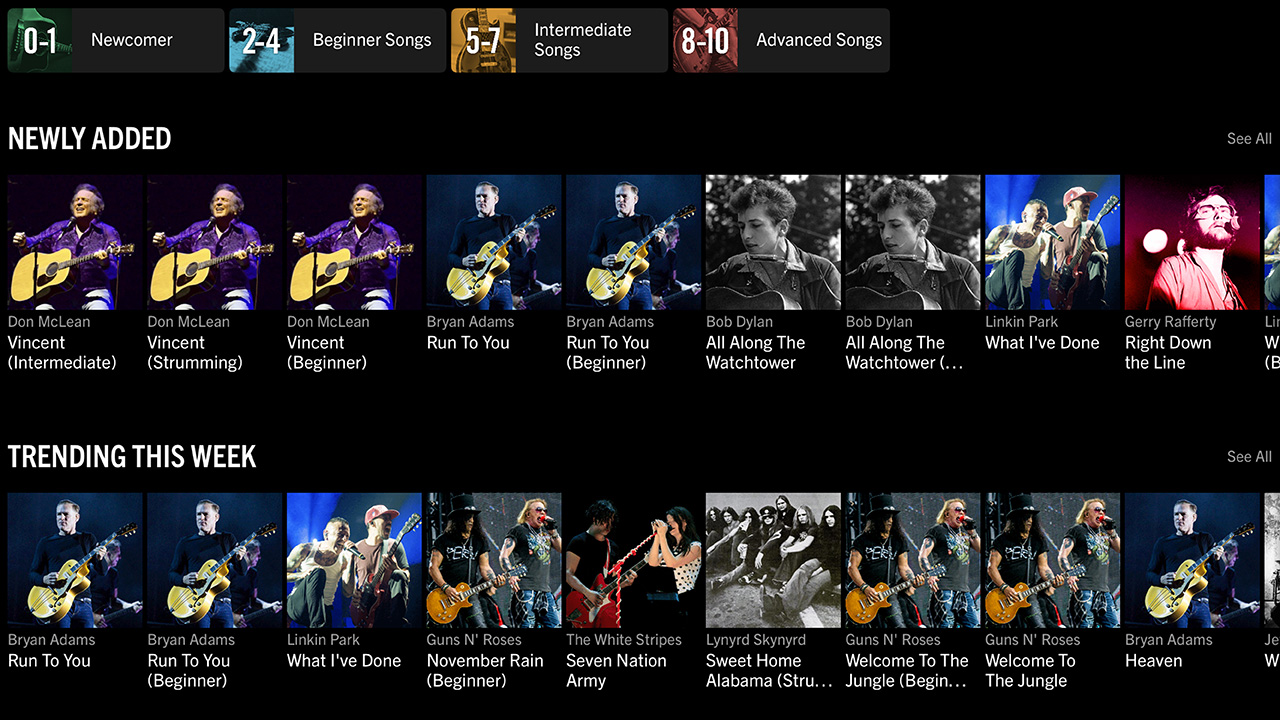
The song library has improved considerably over the past few years, ploughing a course that’s wider in genre and deeper in content. This is especially true for Premium+ members, who gain access to ‘famous’ songs. All the usual suspects remain – Pink Floyd, Cream, Black Sabbath, Metallica, Nirvana, Guns and Roses, AC/DC, and so on – but they're now joined by a disparate gang that includes The Cure, Don McLean, The Cranberries, Bob Marley, Cat Stevens, Miley Cyrus, The Killers, Maroon 5, and more.
However, there's a dearth of contemporary chart material, apart from the aforementioned Cyrus and a few token tracks from Harry Styles and Ed Sheeran. Which is a great shame. There’s plenty on offer if you like blues and rock from the 1950s to 1990s – admittedly, a core market for Gibson – but the app does appear stuck in a rut in this regard.
You can sort songs into genres like rock, metal, blues, pop, folk, country, traditional, acoustic, and classical, but if you exclude the first three categories, there's very little substance remaining. The inclusion of a few classical tracks – simple arrangements played on a steel string guitar? – is incongruous when there’s little to no jazz content.
Happily, the tuition within the song library is top-notch, consistently upholding the high instructional standard established by the core learning paths. Many of the songs are available in up to four different versions to suit different abilities, and most are deconstructed into their essential parts, allowing you to learn the intro riff, verse, and solo in manageable chunks.
A few songs are even taught by the artist – Ryan Roxie from the Alice Cooper Band, Lovisa Sjöberg Nordahl, and Jared James Nichols all feature – but there’s been no new artist-led content for several years now. I wonder if Gibson has put this feature on the back burner?
In short, the song library has a sound foundation, but work is needed to plug some of the gaping holes. Gibson is adding new content all the time, but it tends to be the familiar old genres – time for a refresh, Cesar.
Guiding light
Fortunately, the Guides section is a tour de force; it’s where intermediate and advanced players will spend most of their time. It’s packed with useful short courses on everything from mastering the minor and major pentatonic scales to more esoteric titles such as ‘Play solos like the Masters of Thrash’. In between, there are solid fundamentals on electric country, reggae, jazz, funk and so on, as well as courses dedicated to mimicking the style and technique of music legends such as Brian May, Slash, Toni Iommi – even Joni Mitchell has a dedicated course. Additionally, you’ll find courses on music theory, harmony, rhythm, chord progressions, songwriting.
A visit to the Guides section brings clarity to Gibson’s roadmap. Sensibly, beginners and early intermediates are funnelled down the relatively rudimentary learning paths until they have gained enough skill to explore broader content. If you seek depth and substance within the app, the Guides section is where it’s at.
Amping it up
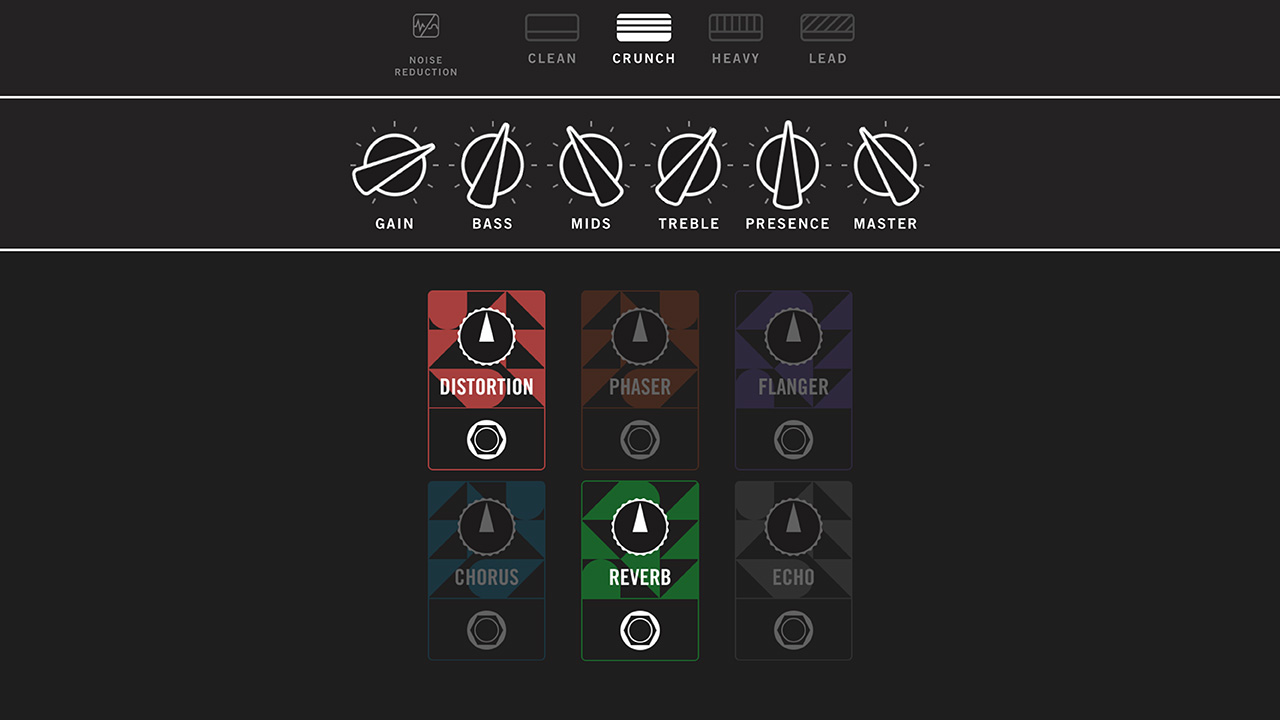
I’ve mentioned the app’s amp section briefly before, but it’s so good it deserves its own small section, as it adds a new level of fun and authenticity to the world of tuition apps. To recap, it transforms your clean ‘unplugged’ guitar sound – acoustic or electric – into a convincing, amplified tone, complete with EQ and effects. In other words, it sounds like you're playing through a real amp, with all the tonal possibilities that offers.
It's mandatory to wear wired headphones when using the amp, and Gibson also recommends plugging your guitar into your tablet via a suitable interface, such as IK Multimedia’s iRig. I had no choice but to wear headphones, but I didn’t connect my guitar to an interface. I found the results acceptable without doing so, and I worry the extra hassle might discourage practice.
The amp comes in two flavors: acoustic and electric. The acoustic app lacks tone controls, instead replacing them with four presets: clean, spirit, moon, and 80s. To my ear, these presets become increasingly ‘wet’, soaking your guitar’s tone in varying degrees of reverb, chorus, flanger and phaser.
Additionally, there are three mic presets to choose from: condenser, ribbon, and dynamic. There is also a comprehensive pedalboard, especially useful for enhancing the clean setting, featuring distortion, phaser, flanger, chorus, reverb, and echo effects.
The electric guitar amp also features four presets, which become progressively saturated with heavier distortion: clean, crunch, heavy and lead. This time, there are extensive EQ controls: gain, bass, mids, treble, presence, plus a master volume. The virtual effects pedalboard is identical to the acoustic version.
Both acoustic and electric amps are joyous to play through. Understandably, the acoustic amp offers more subtle variation in tone than the electric amp, and sometimes it’s difficult to hear more delicate effects over the natural volume of my own guitar. The electric amp is more tonally forthright, serving both as a real laugh and a useful piece of virtual gear that allows you to match your electric tone to genre.
The amp is available in courses, lessons, and exercises, but Gibson also provides more than 40 jam tracks to play along with. Included with the tracks are performance notes, such as key, relevant fretboard scale shapes, suggested licks, and so on – plus the facility to record your session. The tracks are amusing to explore and provide valuable practice opportunities, but predictably, rock and blues genres dominate. I hate to break it to Android users, but the amp feature is currently iOS-only too.
Care and competition in the community
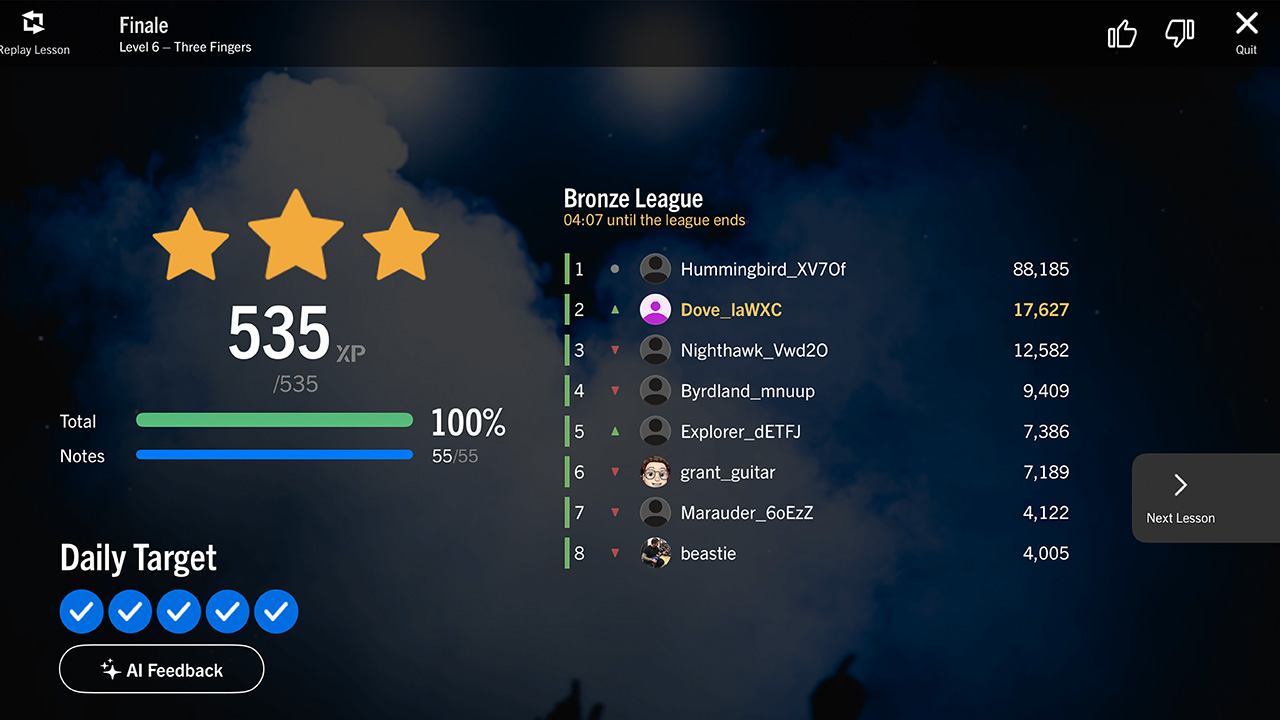
In keeping with its gamified approach, the Gibson app rewards players with experience points, aka XPs, as they complete lessons and songs. The more challenging the content, the more XPs are up for grabs.
These points are not just measures of progress and performance; they also serve as a useful motivational tool. Gibson ranks users in weekly leagues to foster healthy competition. I once managed to come second in the Bronze League with 17,000 XPs – a proud day until I noticed a user named Sunny-millar tops the app’s Hall Of Fame leaderboard with 147,001,300 XPs. Clearly, I have some way to go, but at least my short-lived experience near the top of the bottom league illustrates the depth of content available. Sadly, the leagues are an iOS-only feature.
Gibson also awards ‘Diplomas’ for completing levels and ‘Streaks’ for achieving daily and weekly goals. Players are not penalised for missing streaks, all profile data remains anonymous, and it's currently not possible to follow other players.
If you value closer contact with fellow guitarists, you can head over to the in-app forum launched by Gibson earlier in 2025. Strictly non-competitive, it provides a space to discuss all things guitar tuition, including technique and theory, gear and setup, app content and features, as well as tips and tricks. You can even ask Jamie Humphries for helpful advice on issues that may be holding you back.
Gibson hopes the forum will become the focus of a welcoming community where guitarists can freely seek and offer guidance.
AI Feedback
One feature that impresses me more than I initially thought it would is the app’s AI-driven Personalised Feedback. Complete five lessons in a day, and the app will generate a report that provides feedback on your performance, judge progress made, and highlight areas ripe for improvement. Currently, the report remains quite concise, so I hope Gibson considers expanding it in the future. Unfortunately, AI feedback is another iOS-only feature.
Gibson app review: Conclusion
A few years ago, I only felt comfortable recommending Gibson’s app to beginners. Excellent though it was, there simply wasn’t enough content available to support intermediate and advanced players. Much has changed since then. The learning paths remain quite basic, but the Guides section is bursting with quality content that should keep more experienced guitarists busy for months, if not years.
The quality of tuition remains second to none, the user interface is slick, and the amp feature is both practical and entertaining. It’s only the song library that lets the app down, with its heavy fixation on blues and rock.
The Premium tier app offers good value compared to its rivals. If upgrading to Premium+, just ensure you enjoy blues and rock genres.
Gibson app review: Specifications
- Cost: Monthly Premium subscription $19.99/£16.99; yearly Premium subscription $119.99/£99.99. Monthly Premium+ subscription $24.99/£19.99; yearly Premium+ subscription $159.99/£119.99.
- General: The Gibson App runs on Android and iOS. It'll run on mobiles, but a tablet is recommended. Headphones are required to use the Amp feature, and I'd advise you to use them when exploring the rest of the app to isolate the natural sound of your guitar. Similarly, it’s not necessary to plug your guitar into your device – using an IK Multimedia iRig or similar – but it is recommended.
- Download for iOS
- Download for Android







